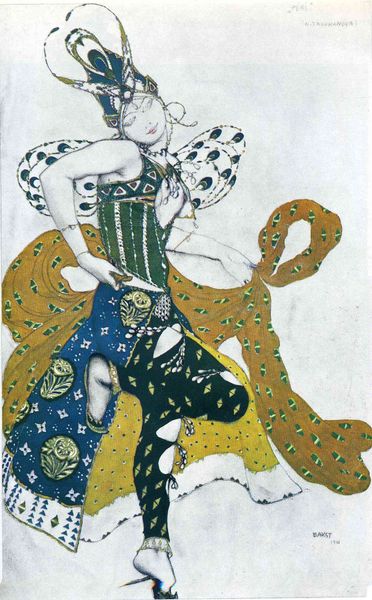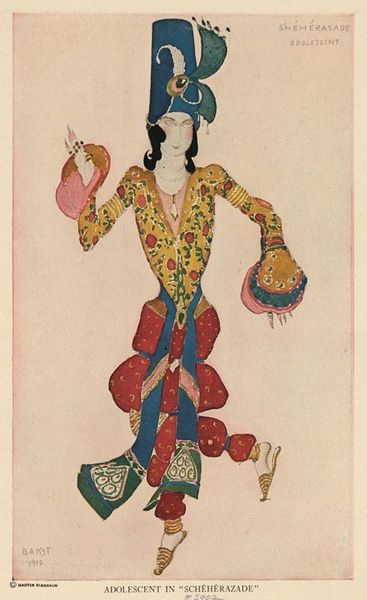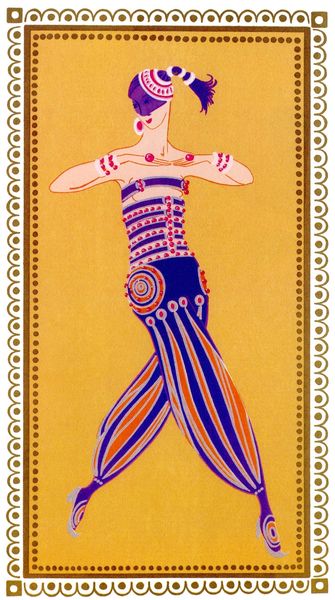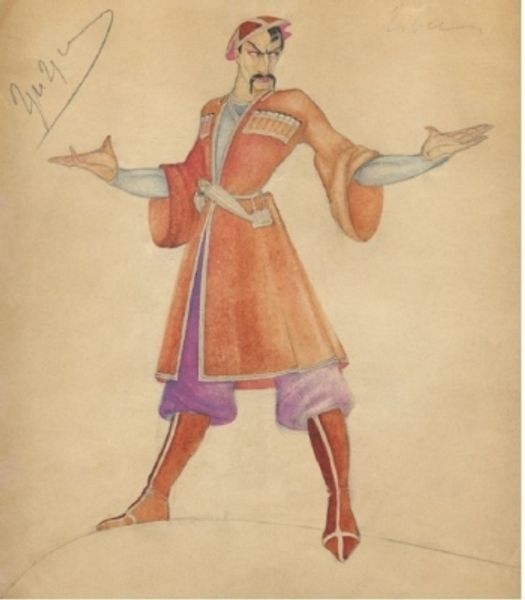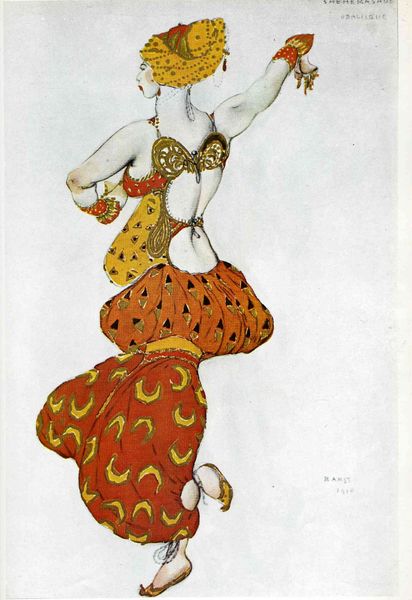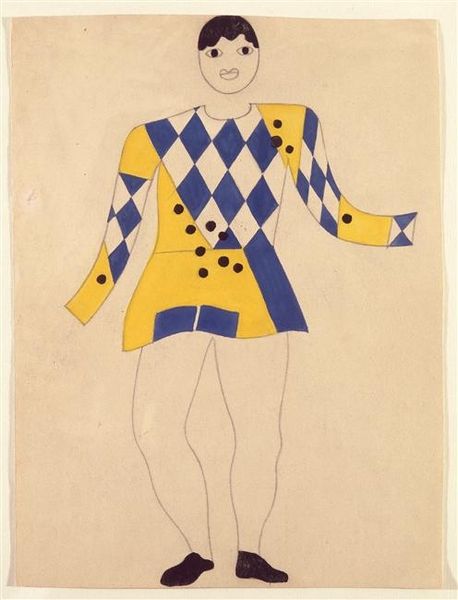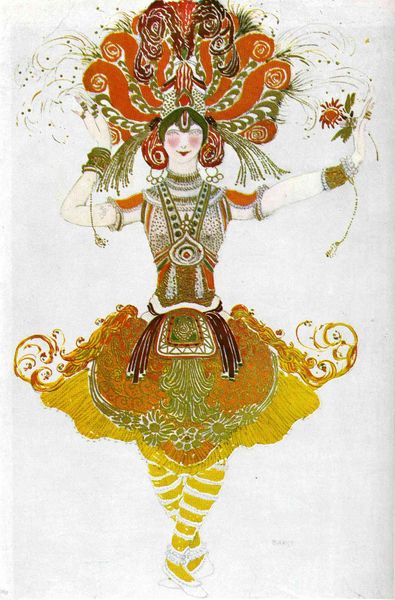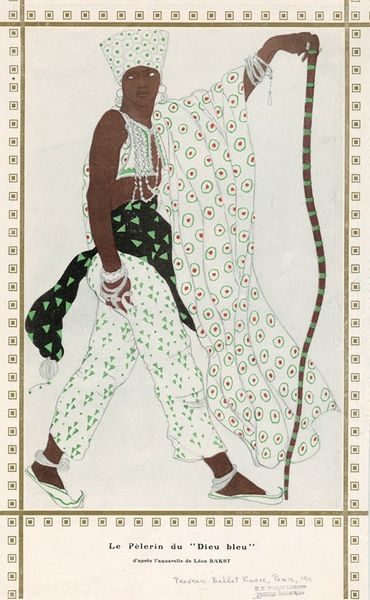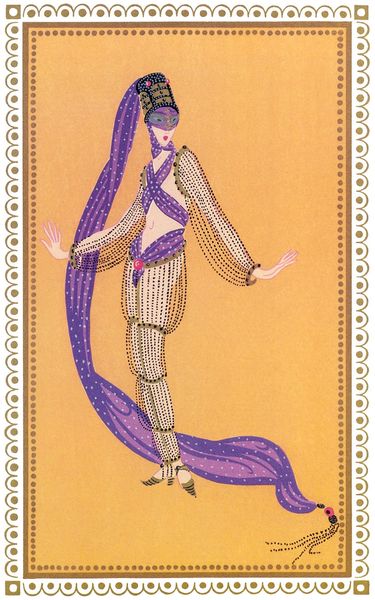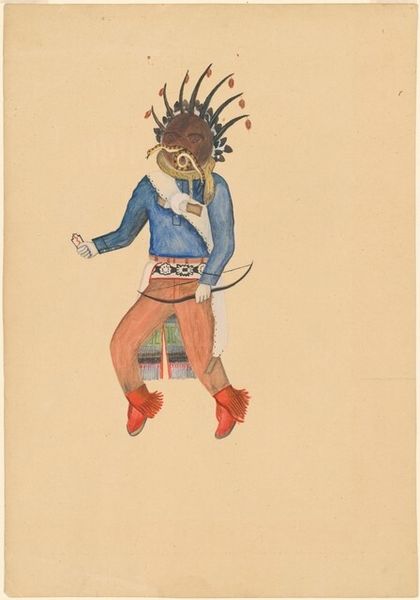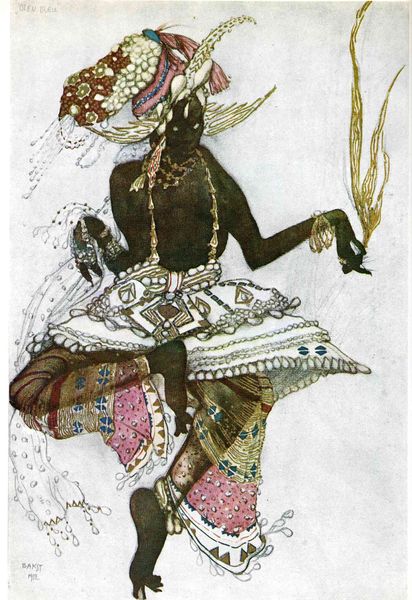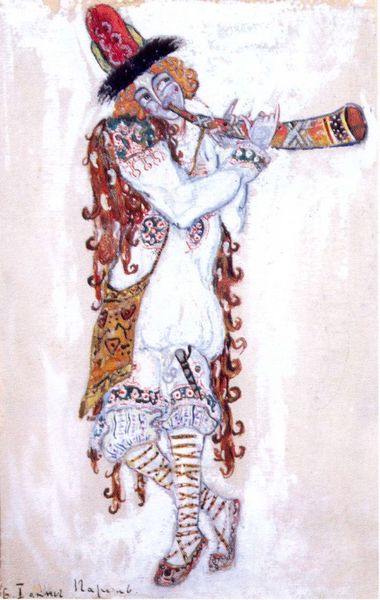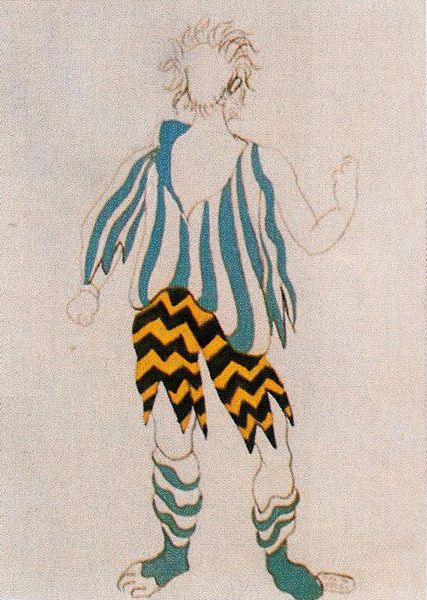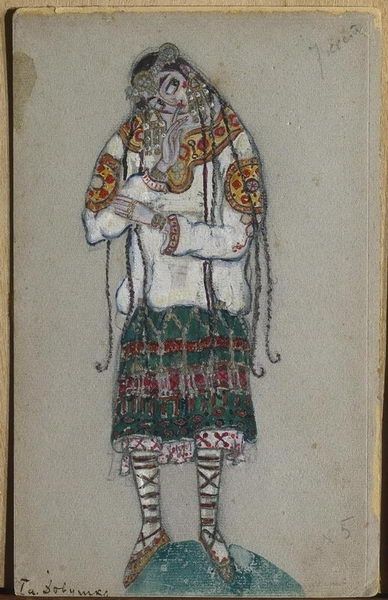
drawing
#
drawing
#
art-nouveau
#
figuration
#
costume
#
decorative-art
Copyright: Public domain
Editor: Here we have Léon Bakst's 1910 drawing, "Costume for Nijinsky". I'm immediately drawn to the bright colours, the decorative Art Nouveau patterns, and how they give a sense of movement. What do you see in this piece? Curator: What immediately strikes me is the interplay of line and color. Note how Bakst employs sinuous lines, characteristic of Art Nouveau, to define the contours of the costume, particularly in the hat and the swirling fabric. The strategic placement of color—the vibrant blues, reds, and yellows—creates a visual rhythm. Can you see how these colors aren't just applied arbitrarily, but seem to follow a calculated pattern, almost like a musical score? Editor: I can see how the patterns create movement. I guess the colour palette really amplifies that. But are there other features that define Bakst's practice here? Curator: Look closer at the way he uses the line to create depth, particularly in the folds of the costume. Observe how the patterns in the textile have been reduced in such a way that one would be forgiven for assuming a lack of form; yet there’s a visual balance which keeps us hooked. Also, how the artist limits and frames depth. This interplay serves a dual function. First, it grounds the figure on the white page; second, it enlivens a theatrical sense in the picture’s symbolic composition. It is at once lively and constrained, what a fascinating visual tension. Editor: That's really insightful! I had not considered it that way before, especially thinking about it with visual and theoretical frameworks. It really gives us another understanding of the drawing. Curator: Indeed, a formalist reading allows us to see the intricate web of formal relationships, moving us towards a deeper engagement with the art.
Comments
No comments
Be the first to comment and join the conversation on the ultimate creative platform.
